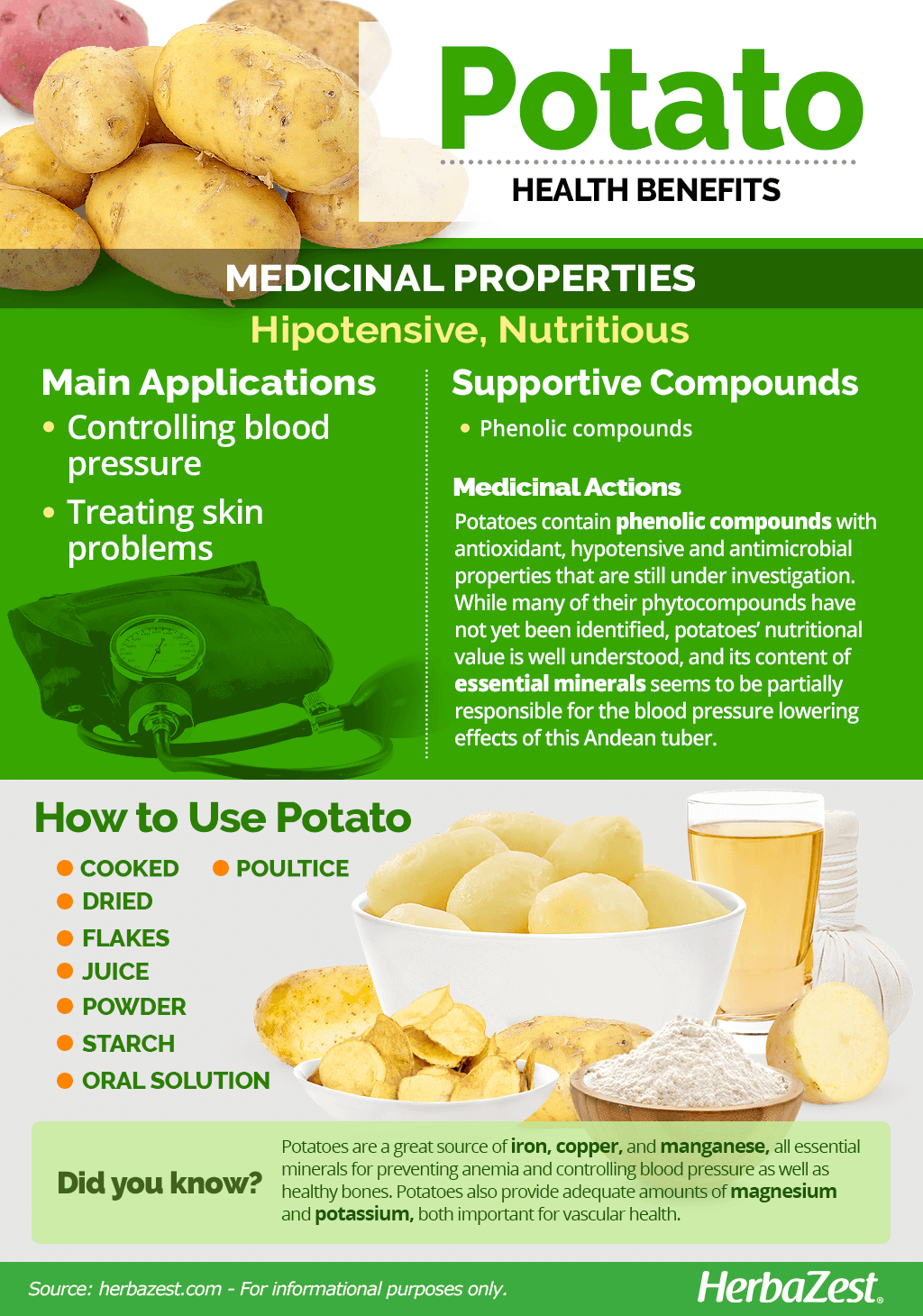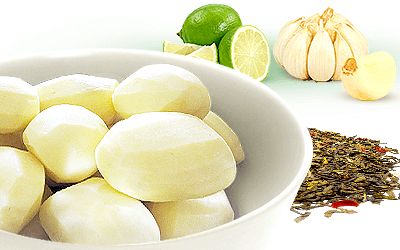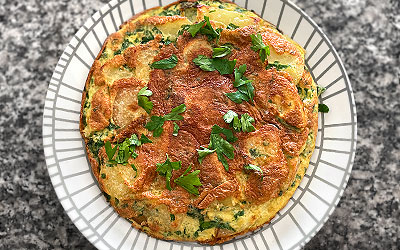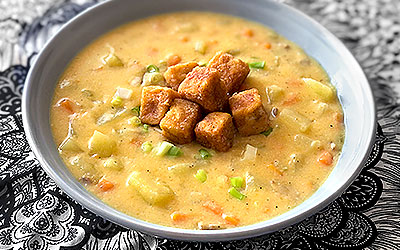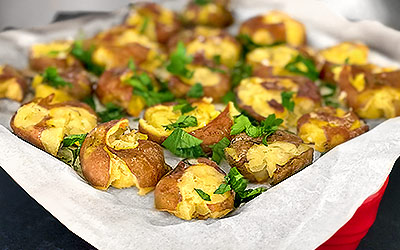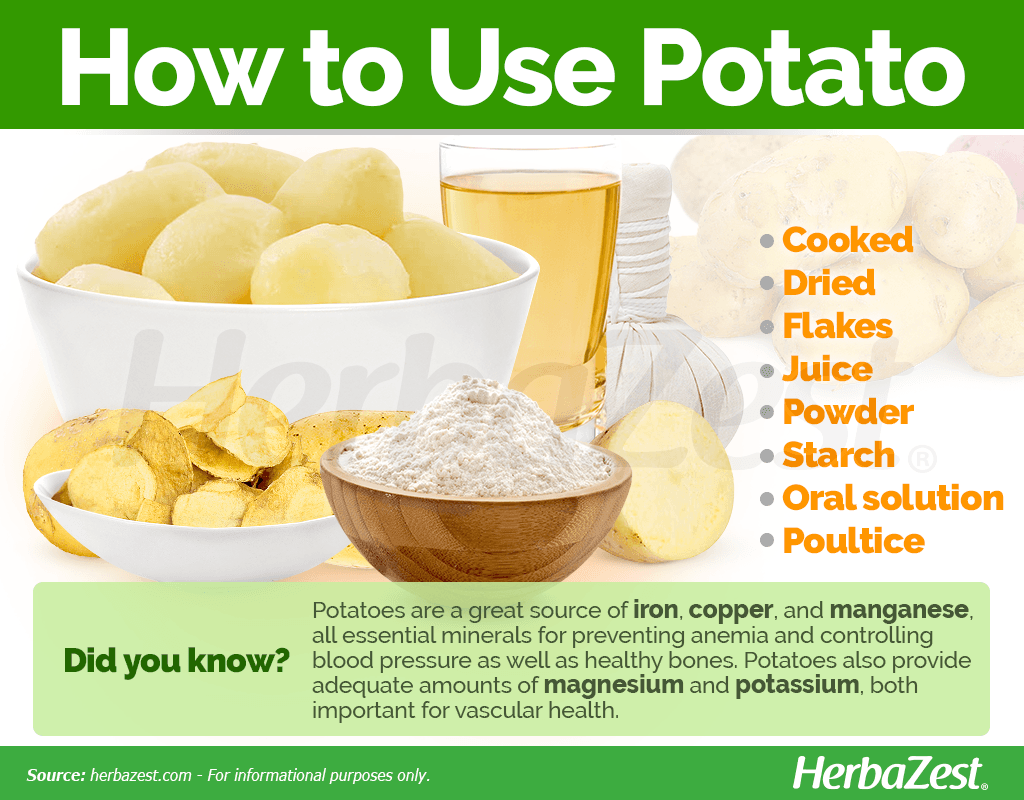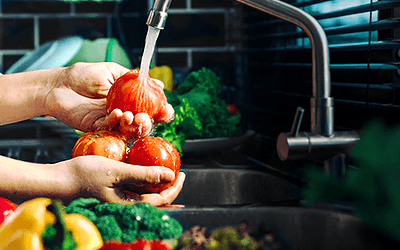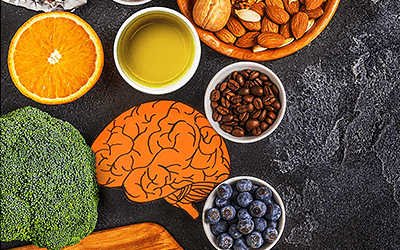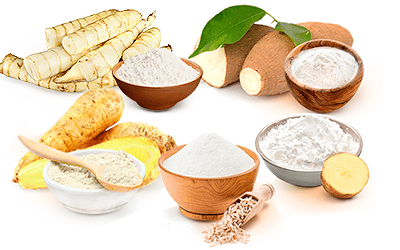Native to Chile, Bolivia, and Peru, potatoes were cultivated and consumed for thousands of years in South America. They were discovered by the Spanish Conquerors in the 16th century, before making their way to Europe. But it wasn't until two centuries later that Europeans realized potatoes' nutritional value and embraced their consumption.
Potato Medicinal Properties
- Medicinal action Hypotensive, Nutritious
- Key constituents Phenolic compounds
- Ways to use Food, Juiced, Poultice, Powder, Dried
- Medicinal rating (2) Minorly useful plant
- Safety ranking Safe
Health Benefits of Potatoes
By and large, potatoes are known primarily for their nutritional value, so modern research into medicinal uses is limited. Nonetheless, potatoes have been traditionally used in Quechua communities for the topical treatment of headaches, hemorrhoids, ulcers, and burns. The antioxidant and antimicrobial properties of potato have led researchers to investigate the following unconfirmed, potential medicinal uses:
Controlling blood pressure. When consumed in moderation as part of a healthy diet, potatoes have been shown to lower blood pressure, improve lipid profiles, and decrease inflammation markers.
Treating skin problems. The antimicrobial properties of potatoes have been used for healing superficial wounds and skin rashes as well as for improving skin appearance, thanks to their antioxidant properties.
Additionally, potatoes contain dietary fiber - mostly concentrated in the peel - which improves digestive health. Furthermore, they have been successfully used for treating Staphylococcus infections as well as for preventing dehydration during stomach infections.
How They Work
Potatoes have many essential nutrients. They also contain antioxidants, which may play a part in preventing age-related diseases, and dietary fiber, which benefits both digestive and cardiovascular health.1
The active compounds in potatoes vary depending on the flesh color. Unlike other varieties, purple potatoes contain anthocyanins, which are antioxidant agents. They also have significantly more phenolic compounds than white and yellow potatoes. On the other hand, potatoes with yellow flesh contain more carotenoids - which are vitamin A precursors - than other varieties.
The anthocyanins in certain varieties of potatoes, such as 'Vitelotte,' also have antimicrobial properties, namely against Staphylococcus and Rhizoctonia solani.2 While many of the phytocompounds in potatoes have not yet been identified, their nutritional value is well understood.
In the late 20th century, a decoction made of potatoes, carrots, sugar, and salt was authorized by the World Health Organization as a home alternative to oral rehydration therapy (ORT) for stomach infections since it yields a potassium- and beta carotene-rich liquid that can help replenish lost nutrients. This recipe proved invaluable in many infectious outbreaks and famines across South America, Southeast Asia, and Africa, where logistic problems or geopolitical conflicts prevented the proper distribution of ORT bags.
Antimicrobial benefits can be obtained from mustard and thyme, while persimmon, passion fruit and saffron also have hypotensive properties.
Potato Side Effects
Potatoes are considered generally safe for most people; however, like with most good things in life, moderation is key. Potatoes are high in the type of carbohydrate that the body digests rapidly, causing blood sugar pikes that can result in people feeling hungry again soon after eating, which may then lead to overeating. Excessive, long-term consumption of potatoes can increase the risk of cardiovascular disease and type 2 diabetes.
Potato Cautions
Potatoes contain a toxic compound called solanine, which is more concentrated in the green tubers or new sprouts of the potato plant.
People allergic to nightshade species can experience symptoms that usually include: joint pain, stiffness, headaches, dizziness, diarrhea, nausea, mild depression, and skin irritations. Nightshades can also worsen existing inflammations and joint pain in sensitive individuals.
Potato Nutrition
Although potato's protein content is fairly low, it has an excellent biological value of 90-100, similar to that of cereals, and very high in comparison with other roots and tubers.
Due to their content of carbohydrates, potatoes are a good source of energy. However, they need to be consumed in moderation. They also offer adequate amounts of protein and moderate levels of dietary fiber.
The fact that potatoes were a great addition to the European diet is backed by their nutritional value. Potatoes are a great source of iron, copper, and manganese, all essential minerals that play a key role in preventing anemia and controlling blood pressure as well as promoting bone growth and development. Potatoes also provide adequate amounts of magnesium and potassium, both instrumental for vascular health. Potassium regulates blood pressure by blunting the effects of sodium. It also contributes to relaxing blood vessel walls, which further helps reduce hypertension.
Potatoes also provide good amounts of vitamin B6 (pyridoxine), necessary for proper brain development and function as well as for the production of serotonin and norepinephrine, two hormones that influence mood. Potatoes also stimulate the production of another important hormone, melatonin, which regulates the circadian clock that determines sleep patterns.
The nutritional value of potatoes are rounded by adequate amounts of other B vitamins, mainly B3 (niacin) and B5 (pantothenic acid), along with vitamin C (ascorbic acid).
100 GRAMS OF BOILED POTATOES WITH SKIN PROVIDE 78 CALORIES, 6% OF THE DAILY VALUE (DV) FOR PROTEIN AND CARBOHYDRATES EACH AND 13% DV OF DIETARY FIBER.

How to Consume Potato
- Edible parts Root
- Edible uses Protein
The versatility and relatively low cost of potatoes is what makes them such a popular ingredient in various meals. They can be baked, fried, mashed, boiled, grilled, and roasted, and they are featured heavily in many modern diets around the world.
Although the main uses of potato are culinary, the medicinal properties of this Andean native tuber can be reaped through herbal remedies and supplements.
Natural Forms
- Cooked. While there are many unhealthy ways to eat a potato (e.g., as fries, chips, or a buttery mash), this tuber can be prepared in an incredible variety of healthy ways, with boiling and baking being the most beneficial methods.
- Dried. Dehydrated potatoes, whether as whole or in small pieces, maintain their high nutritive value with less nutrition loss. Dried potatoes, previously soaked in water, can be prepared in soups, stews, and many other dishes.
Flakes. Previously cooked and dehydrated, this form of potatoes is commonly used for preparing mash, soups, and many other dishes.
Juice. Raw potatoes can be juiced, alone or with other herbs, in order to take advantage of their nutritional and anti-inflammatory benefits.
- Powder. Dried and finely ground, this form of potato is often consumed as a supplement.
- Starch. Potato starch is a very common thickener for soups, sauces, and custards. It also provides a crusty exterior to fried foods.
Herbal Remedies & Supplements
Oral solution. When boiled with salt and sugar, the liquid and starches of potatoes made a great life-saving oral rehydration therapy for severe stomach infections.
Poultice. Skin problems, such as wounds, burns, and rashes can be treated topically, with a compress of raw grated potatoes in order to reduce inflammation and prevent infections.
Although relatively rare, potato's protein extract can be found in capsules, marketed as a supplement for weight control.
Growing
- Life cycle Perennial
- Harvested parts Roots
- Light requirements Full sun
- Soil Medium (loam), Well-drained
- Growing habitat Temperate climates
- Planting time Spring
- Potential insect pests Beetles
- Potential diseases Fungi, Phytophthora spp.
Although potatoes are one of the most extensively cultivated crops and are ubiquitous around the world, it is a popular trend to grow them at home. It is because the potato plant has shown great adaptability to a variety of conditions, and it is relatively easy to take care of.
Growing Guidelines
Potatoes can be grown from the seeds in their green fruit or from the sprouting tubers themselves, but growing them from seed is rare. The "seed potato" (which simply means a tuber that is planted for the purpose of producing more potatoes) can grow in most soil types, but for optimum growth, it is best to aim for well-drained, loamy soil.
In order to prepare for planting potatoes in spring, the deep plot should be dug in late autumn or early winter. This way, the frost can break down the soil structure.
Seed potatoes should not be planted until the soil temperature has reached 40°F (5°C), and the plot requires about six hours of sun every day.
Seed potatoes also need to be prepared beforehand - cut any tubers larger than a chicken egg into pieces, with no more than two eyes (buds from which the new crop will grow) on each piece. These should be kept in a warm place for two to four weeks, or until they start sprouting.
Potatoes are very hardy and frost resistant, but are prone to infestation by weevil beetles and Phytophthora infestans fungi. It is generally recommended to leave three to four years in between growing potatoes on the same plot in order to avoid diseases.
Some may not know: the visible part of the potato is actually poisonous to humans, and the only edible part is located under the ground.
Additional Information
- Other uses Alcohol, Animal feed, Fuel
Plant Biology
The potato is a perennial plant that grows up to 3 feet (91 cm) tall. It has branching stems with compound leaves and white or purple flowers. The swollen tubers (part of the root) are the most well-known part of the plant, but unbeknownst to most, it also produces green fruits that are very similar to a tomato.
Classification
Potatoes (Solanum tuberosum), categorized under the Solanum genus, are members of the Solanaceae or nightshade family, as well as other economically important species: eggplant, peppers (including bell pepper, cayenne, and chili pepper), and tomatoes. Less known members of this family are goji berries and ashwagandha.
Varieties and Subspecies of Potatoes
There are innumerable varieties of potato that have been developed over the years, depending on their region. Roughly, they can be classified according to color as russets, reds, whites, golden, and purple potatoes. However, it is estimated that over 5,000 varieties have been developed in South America by the Quechua and Aymara peoples. Because many of the traditional cultivation areas are remote and have been subjected to repeated warfare, many of these unique varieties are considered endangered, while others have not been properly classified.
Seven recognized potato species and 5,000 potato varieties are grown in the Andes.
Historical Information
The origins of potato can be traced back 8,000 years ago to the area surrounding Lake Titicaca, which sits at 12,500 feet (3,800 m) above sea level in the Andes mountain range of South America, on the border between Bolivia and Peru, where communities of hunters and gatherers began domesticating the wild potato plants that abundantly grew around the lake.
The Spanish invasion of 1532, spelled the end of the Incas - but not of the potato. Spanish explorers realized the nutritional value of potatoes and introduced them into Spain as early as 1570. In 1613, they were shipped from England to Bermuda and from there to Virginia in 1621.
By the end of the 17th century, potatoes had become the food staple of the Irish, and the cultivation of the Andean tuber continued to spread throughout the world during the 19th century.
In some parts of the high Andes, farmers still measure land in "topo," the area a family needs to grow their potato supply.
Popular Beliefs
The potato plays an important role in many cultural practices of the Quechua ethnic group in the Andes. One particular practice involves a prospective daughter-in-law being presented with a pinecone-shaped tuber, which she has to peel. If too much is peeled off, the marriage cannot go ahead.
For many years after their introduction, European people were convinced that eating potatoes would cause terrible diseases, such as leprosy and syphilis, partly because the crop was not mentioned in the Bible, which meant it was unfit for human consumption. The change in perspective did not occur until the 18th century, when potatoes triggered a tangible population boom wherever adopted thanks to their alimentary value.
Economic Data
Having enjoyed a long history in South America, the potato is now one of the world's most popular vegetables. It is now cultivated worldwide, with 20 million hectares in total dedicated to this purpose, producing more than 300 million metric tons per year. The potato industry is now worth a massive $116 billion USD per year. China is the leading producer, growing 86 million metric tons annually. On the other hand, the highest potato yield per hectare belongs to the Netherlands, which harvests an average of 50 tons per cultivated hectare of potato crops.
Other Uses
As potatoes are considered an easy-to-find and cheap material around the world, they are widely used for different industrial purposes.
Alcohol ingredient. Potatoes are fermented and distilled in many parts of the world to make alcoholic beverages, such as vodka or akvavit.
Thickening agent. Potato starch is commonly used a thickening or stabilizing agent in the food industry and for animal feed.
Eco-friendly products. New research is emerging for the use of potatoes as the basis for biodegradable plastic products, like wrapping and plates.
Fuel. Byproducts from potato are being developed into fuel-grade ethanol.
Sources
- Annals of Medicine, The role of potatoes and potato components in cardiometabolic health: a review.
- British Broadcasting Corporation, Grow Your Own Potatoes
- Choose My Plate, Why Is it Important to Eat Vegetables?
- Cornell University, Potatoes
- Critical Reviews in Food Science and Nutrition, Potatoes and human health
- Food Chemistry, Health benefits of the potato affected by domestic cooking: A review
- Harvard University, The problem with potatoes
- Lost Crops of the Incas, pp. 22-25, 92-103
- Rozprawy Naukowe - Scientific Treatises of University School of Physical Education in Wroclaw, Potato as a Global Plant – Nutritional, Dietary and Medicinal Values, 2009
- The Encyclopedia of Healing Foods, p. 225
- The Weston A. Price Foundation, Nightshades: Problems from these Popular Foods Exposed to the Light of Day
- University of California - Berkeley, NSF Potato Genome Project
- University of California, Davis, A Review of Important Facts about Potato Glycoalkaloids
- FAOSTAT, Potatoes
- Journal of Pharmacy and Pharmacology, Inhibitory effects of Solanum tuberosum L. var. vitelotte extract on 2,4-dinitrochlorobenzene-induced atopic dermatitis in mice, 2014
- Germplasm Resources Information, Taxon: Solanum tuberosum L.
- Food and Chemical Toxicology, Antioxidant, antimicrobial and anti-proliferative activities of Solanum tuberosum L. var. Vitelotte, 2013
- International Potato Center, Potato Processing and Uses; Potato Nutrition
Footnotes:
- Preventive Nutrition and Food Science. (2016). Antioxidant Contents and Antioxidant Activities of White and Colored Potatoes (Solanum tuberosum L.). Retrieved November 17, 2021, from: https://www.ncbi.nlm.nih.gov/pmc/articles/PMC4935237/
- Natural Product Research. (2015). In vitro antioxidant, antimicrobial and anti-proliferative activities of purple potato extracts (Solanum tuberosum cv Vitelotte noire) following simulated gastro-intestinal digestion. Retrieved November 17, 2021, from: https://pubmed.ncbi.nlm.nih.gov/25420792/
